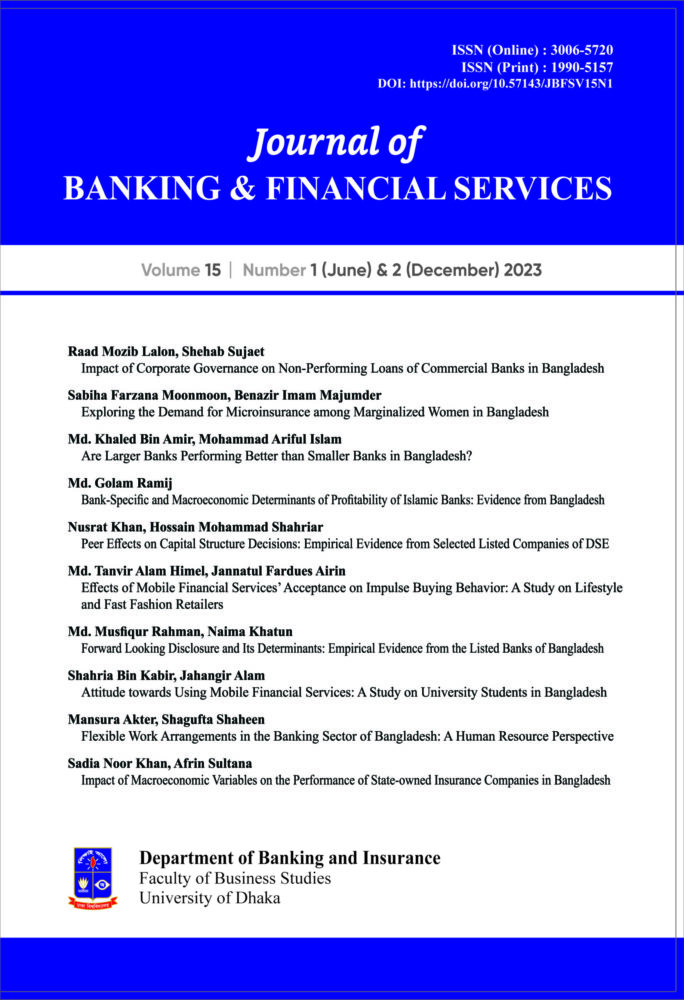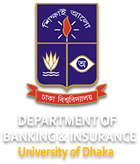Bank-Specific and Macroeconomic Profitability Determinants of Islamic Banks: Evidence from Bangladesh.

Md. Golam Ramij
Assistant Professor, Department of Banking and Insurance, University of Dhaka-1000.
Email: ramij@du.ac.bd
Journal of Banking & Financial Services
Volume 15 Number 1 June & 2 December 2023
DOI : https://doi.org/10.57143/JBFSV15A4
Published online: 30 May, 2024
Published in Print: 02 June, 2024
This study investigates the determinants of profitability of Islamic banks in Bangladesh, considering different bank- specific and macroeconomic variables. This study used ROA and ROE as indicators of Islamic banks’ profitability. The study comprised data from eight Islamic banks spanned from the years of 2011 to 2020. Applying the Fixed Effect Model (FEM), Random Effect Model (REM), and Pooled OLS, the estimated result shows that the three methods classified investment ratio and cost-to-income ratio negatively affect the Islamic bank’s profitability indicators ROA. Whereas the investment-to-deposit ratio and inflation rate positively affect the Islamic bank’s ROE, conversely, Investment to total asset ratio, classified investment ratio, and capital adequacy ratio negatively affect the bank’s profitability of ROE. After applying the robustness method of FGLS, this study found that classified investment ratio, investment to deposit ratio, and the inflation rate is a strong predictor of increasing banks’ overall profitability, and the capital adequacy ratio, cost income ratio, and interest rate are a strong predictor of reducing Islamic banks profitability.
Keywords:
Islamic Banking, Profitability, ROA, ROE
